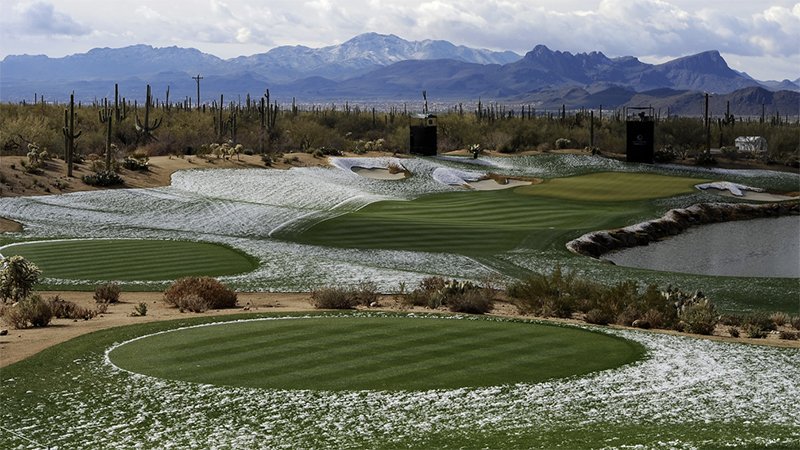Anyone headed to Arizona for a winter golf conference might want to pack a jacket, and those located in parts of the Midwest, Mid-Atlantic and Northeast might want to start putting together a plan to thwart winter damage on greens.
Slightly warmer water temperatures in the equatorial Pacific could trigger El Niño conditions in much of the country this winter, according to meteorologist Herb Stevens, principal of Grass Roots Weather and T3 Golf. That could translate into cooler-than-normal temperatures throughout much of the South from California to Florida, heavier precipitation in parts of the eastern U.S. and some extended periods of frigid polar air.
When water temperatures in the eastern equatorial Pacific are warmer than usual, the result usually is an El Niño winter that brings cool, wet conditions across the South, drier-than-normal conditions in the Midwest and more precipitation in the Mid-Atlantic and Northeast.
A La Niña is the result of cooler temperatures in the Pacific and translates into dry conditions across the country's southern tier, unseasonably warm temperatures in the upper South and increased precipitation in the Midwest.
History tells us that January will be harsh in the Great Lakes, Northeast and Mid-Atlantic.
"The Pacific is the biggest source of heat energy on the planet," Stevens said. "When the water temperatures are warmer than normal, or cooler than normal, it has an effect on weather conditions in North America.
"If you're going to Phoenix for the GCSAA show, you better bring a coat, or at least a jacket."
Stevens recently was speaking with a friend who spends the winters in Florida playing golf.
"They had three great years of La Niña," Stevens said. "He said in three years he never touched a rain jacket. I told him he better find it."
Water has 1,000 times the heat energy of air, Stevens said. And since the Pacific is the world's largest body of water, fluctuations in water temperature greatly affect global weather patterns.

Deviations of 1.5 degrees Celsius in temperature can result in a strong El Niño or a Niña.
This year, those temperature fluctuations are not as dramatic. That makes accurate predictions even more of a challenge, said Stevens.
"This is going to be a weak to moderate El Niño," Stevens said. "When it's weaker, accurate forecasting is a toss-up."
The Great Lakes and Midwest should be drier this winter, but a phenomenon known as Sudden Stratospheric Warming, which is a disruption to the polar vortex and results in extremely cold air descending into North America.
"The cold that comes with Sudden Stratospheric Warming lasts longer and is more extreme," Stevens said. "History tells us that January will be harsh in the Great Lakes, Northeast and Mid-Atlantic."
If you're going to Phoenix for the GCSAA show, you better bring a coat, or at least a jacket.
Stevens is a former TV meteorologist and one of the original on-air personalities when The Weather Channel debuted in 1982. He has been providing weather reports to the skiing and golf turf industry for more than 20 years with Grass Roots Weather. In 2021, Stevens and fellow meteorologist Garrett Bastardi launched T3 Golf which provides golf course superintendents with short-term forecasts at an uber local level.
Aside from the threat of another polar vortex, there are other reasons for concern among superintendents in some parts of the eastern half of the country.
"It is my estimation that this winter could be stressful for superintendents because of snow cover and ice cover from the Central Appalachians to the Northeast," he said. "And it's going to be cold and dry in other areas, and the concern is desiccation."
There's more good news. An El Niño winter typically means a longer winter.
"The air is colder, and it keeps it cloudy and these storms don't allow for an early spring," Stevens said. "With El Niño there will be no early start to the spring."


